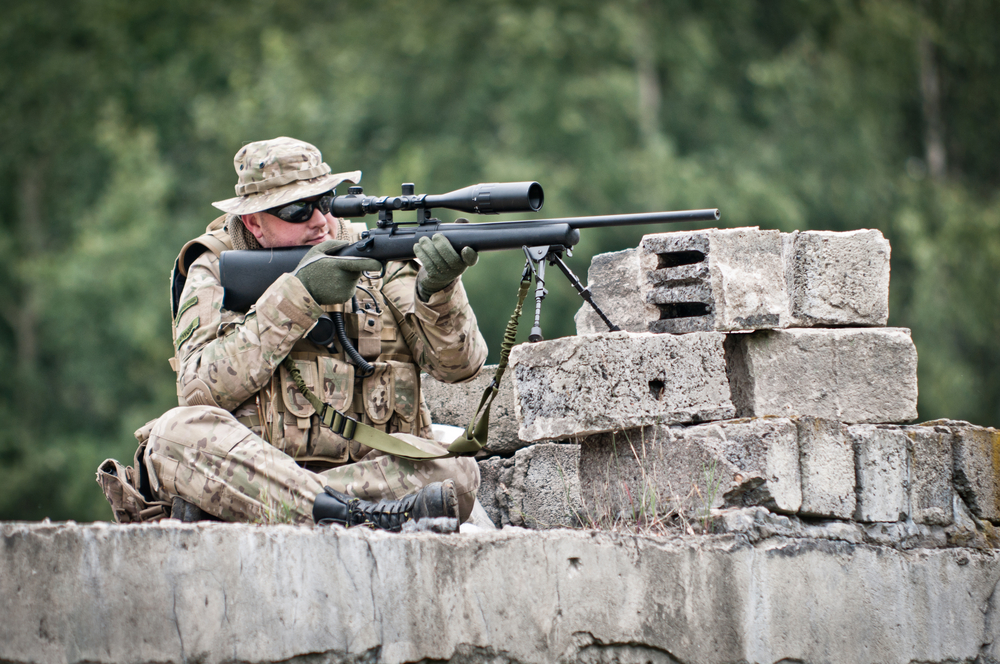Breaking
Risk of friendly fire long an element of war
WASHINGTON — The deaths of five Americans killed in a U.S. airstrike in Afghanistan stand as a fresh reminder of the dangers of friendly fire, an element of war that is older than the nation.
In 1758, during the French and Indian War, a detachment of the British Army led by Col. George Washington got into a firefight with a fellow infantry unit that had arrived to offer assistance. At dusk on a foggy day, they apparently mistook each other for French forces, and at least 13 British troops were killed.
In the Civil War, Confederate Lt. Gen. Thomas “Stonewall” Jackson died of pneumonia eight days after being hit by friendly fire during the Battle of Chancellorsville in Virginia.
In World War II, Army Lt. Gen. Lesley McNair died when an errant Allied bomb struck his position as the Allies struggled to break out from Normandy.
In Vietnam, helicopter gunships killed U.S. troops on Hamburger Hill.
Today, the basic challenge remains the same: distinguishing between friend and foe.
Better training and the precision of modern weapons have helped to reduce fratricide but can’t completely eliminate the risk, says retired Army Col. Peter Mansoor, a professor of military history at Ohio State University.
“War is a very human endeavor, and mistakes inevitably will occur,” says Mansoor.
Some examples of friendly fire incidents in recent history:
2004: AFGHANISTAN-PAT TILLMAN
It was a celebrated moment when Pat Tillman turned down an NFL contract with the Arizona Cardinals to join the military after the Sept. 11, 2001, terrorist attacks. He was serving in the 75th Ranger Regiment when he was killed in Afghanistan on April 22, 2004. The military said officers knew within hours that his death was from friendly fire but violated regulations by not telling Tillman’s family or the public for five weeks.
Some of the details that later emerged: Tillman was close enough to see the men shooting at him when he was killed; his uniform was burned after his death; medical examiners’ suspicions about the bullet holes in his head were ignored; and comrades were ordered not to discuss his death. Just one day after approving a medal citation claiming Tillman had been cut down by “devastating enemy fire” in Afghanistan, a high-ranking general tried to warn President George W. Bush that the story might not be true.
2003: IRAQ-DEADLY DAY
On one of the Iraq war’s deadliest days for American troops, as many as 10 Marines were killed by U.S. airstrikes ordered by a Marine air controller who mistook their vehicles for enemy forces. A Pentagon investigation of the events of March 23, 2003, found “communications problems throughout the battalion.” While under heavy fire from Iraqi artillery, rocket-propelled grenades, mortars and small arms, Charlie Company requested close air support, and two A-10 attack planes responded to the call. The Marine forward air controller cleared the A-10s to fire on the vehicles, not realizing they were from Charlie Company. The attack planes made multiple strikes until they were eventually told to cease fire.
2002: AFGHANISTAN-CANADIANS KILLED
Four Canadians died in April 2002 when an American pilot dropped a 500-pound bomb near where the troops were apparently conducting a live-fire exercise. The pilot blamed the bombing on the “fog of war,” saying he mistook the Canadians’ gunfire for an attack by Taliban forces. He said his superiors never told him the Canadians would be conducting live-fire exercises that night.
2001: AFGHANISTAN-KARZAI’S CLOSE CALL
Three American soldiers and five Afghans died when special forces troops escorting Hamid Karzai’s fighters called in an airstrike meant to hit Taliban positions on Dec. 5, 2001. Instead, a B-52 bomber dropped a 2,000-pound satellite-guided bomb on a battalion command post occupied by the American forces and Afghan allies, including Karzai, the future president. Pentagon officials later said the bomb went astray, because the Air Force combat controller who set the coordinates for the attack had changed the batteries on his GPS receiver, which reset the coordinates back to the user’s location rather than the Taliban position.
1994: IRAQ-HUMANITARIAN MISSION
One of the worst self-inflicted losses in U.S. military history occurred in April 1994, when F-15 fighters shot down two U.S. Army Black Hawk helicopters in the “no fly” zone over northern Iraq. Twenty-six people were killed, including 15 Americans, military officers from Britain, France and Turkey and five Kurdish workers. They were supporting U.N. humanitarian relief efforts on behalf of Kurds in the aftermath of the Persian Gulf War. The F-15 pilots thought the Black Hawks were Iraqi craft violating the restricted zone.
General John Shalikashvili, chairman of the Joint Chiefs of Staff, gave this summary in releasing a 22-volume Pentagon report on the incident: “In place were not just one, but a series of safeguards — some human, some procedural, some technical — that were supposed to ensure an accident of this nature could never happen. Yet, quite clearly, these safeguards failed.” No one was found criminally responsible.
1991: IRAQ-BRITISH SOLDIERS
Nine British soldiers were killed on Feb. 17, 1991, when two U.S. Air Force A-10 attack aircraft fired on their armored personnel carriers in southern Iraq, mistaking it for an Iraqi target the Americans were trying to destroy 13 miles to the east. In all, 35 Americans and nine British troops were killed by friendly fire in the Gulf War. The Americans killed represented nearly one-quarter of the total of 148 U.S. combat deaths.
Associated Press news researcher Rhonda Shafner in New York contributed to this report.






















